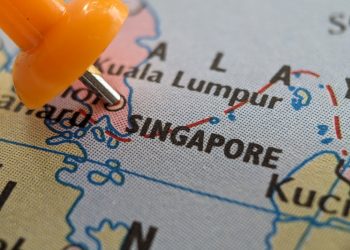Keppel Data Centres, Kawasaki, Linde, MOL and Vopak LNG have entered into a Memorandum of Understanding (MOU) to jointly explore the concept development of a supply infrastructure to bring liquefied hydrogen (LH2) into Singapore to power Keppel’s data centres.
According to this MOU, the five partners will jointly study the technical and commercial viability of a LH2 supply chain, including the feasibility of having a production and liquefaction plant and export terminal at the exporting country, transportation via ocean-going tankers, as well as an import terminal, storage units and regasification facilities in Singapore.
The study is expected to continue till the end of 2021. In the meantime, the partners will decide on the next phase of their collaboration.
The partners also envision that the LH2 supply infrastructure will benefit data centre facilities such as the floating data centre park project in Singapore that Keppel Data Centres is currently pursuing.
We are actively tapping the capabilities of the Keppel Group as well as working with industry partners to explore a range of green solutions such as hydrogen, floating data centres and CCUS (carbon capture, utilisation and sequestration) technologies. With this MOU, we take another step in our journey to use sustainable energy sources for power generation
said Wong Wai Meng, CEO of Keppel Data Centres.
Furthermore, David Burns, Vice President of Clean Energy, Linde, added that hydrogen is a powerful energy carrier and is expected to play a significant role in the reduction of carbon emissions, as part of the larger energy transition that is currently underway.
Due to its versatile nature, hydrogen can be used for many applications, including the decarbonisation of data centres. We are proud to be working with Keppel and other partners in the development of a climate-friendly solution for their operations in Singapore
MOL now aims to develop a commercial and sustainable deep-sea Net Zero Emission vessel by deploying vessels powered by the next-generation fuels by around 2030.
A hydrogen import terminal has the potential to transform industries like the data centre sector. It will also support long-term emissions reduction in Singapore
Kees van Seventer, President, Vopak LNG, concluded.
MOL has also agreed with Mitsui E&S Machinery to begin joint study to introduce hydrogen fuel port cargo handling machineries.
As part of this agreement, Shosen Koun has signed a contract for a new near zero emission (NZE) rubber-tired gantry (RTG) container yard crane and decided to introduce it at the MOL-operated Kobe International Container Terminal (KICT).
Regarding hydrogen, although blue hydrogen (made from fossil fuels) is currently cheaper than ‘green’ hydrogen (made from solar or wind electricity), the situation should reverse by 2030, according to latest analysis by Bloomberg NEF.
As such, blue hydrogen is currently more cost-competititve than green, but the opposite should be true by 2030 in all major markets, as BloombergNEF expects renewable hydrogen to be cheaper by 2030 in all modeled countries, even those with cheap gas (such as the US) and those with pricy renewable power (such as Japan and South Korea).




























































